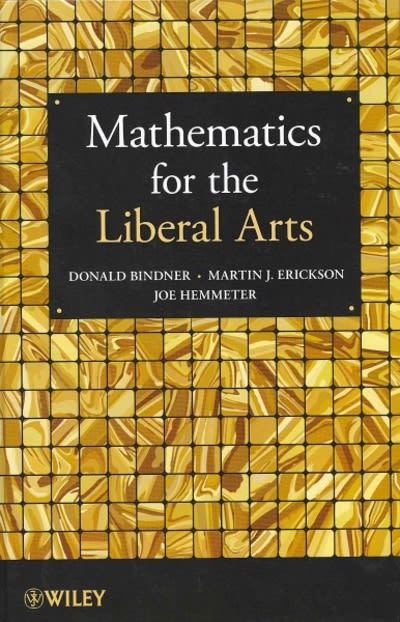Question
EXAMPLE 2: RANDOMIZED CONTROLLED TRIAL IN APPENDIX C EXAMPLE 1: EXAMPLE OF A QUASI-EXPERIMENT Study: Effects of a coping-oriented supportive programme for people with spinal
EXAMPLE 2: RANDOMIZED CONTROLLED TRIAL IN APPENDIX C
EXAMPLE 1: EXAMPLE OF A QUASI-EXPERIMENT
Study:Effects of a coping-oriented supportive programme for people with spinal cord injury during inpatient rehabilitation: A quasi-experimental study (Li et al., 2020).
Statement of Purpose:The purpose of the study was to evaluate the effectiveness of a coping-oriented supportive program in improving people's psychosocial outcomes following a spinal cord injury. It was hypothesized that participation in the program would contribute to greater improvement in coping ability and self-efficacy.
Treatment Groups:The program was a psychosocial intervention for people with spinal cord injury (SCI) undergoing inpatient rehabilitation. The program consisted of eight weekly group sessions lasting 1 to 1.5 hours that provided guidance on problem solving, adaptive coping, and communication skills. The program was delivered by registered nurses in two similar rehabilitation hospitals. One ward in each hospital was selected, at random, to receive the intervention. Patients from two different wards in the same hospitals received an attention control treatment involving eight brief educational sessions (e.g., self-care information, bowel and bladder training).
Method:To estimate their sample size needs, the researchers undertook a power analysis (seeChapter 9) that suggested that a sample of 50 patients per group would be needed to achieve statistical conclusion validity. A total of 99 patients (50 in the intervention group and 49 in the comparison group) participated in the research. Patient-reported assessment data for the primary outcomes and several secondary outcomes (e.g., anxiety, depression) were gathered at baseline, immediately after the intervention, and at two follow-ups. At the final 12-week follow-up, data were collected from 43 patients in the intervention group and 41 patients in the control group.
Key Findings:The intervention and comparison group members were similar demographically and clinically on most baseline traits, but people in the comparison group were less likely to be married and less likely to use analgesic or psychotropic medication than those in the intervention group. The analysis of program effects revealed statistically significant improvements for those in the intervention group, compared to those in the comparison group, with respect to coping, self-efficacy, depression, anxiety, and life satisfaction.
Critical Thinking Exercises
1.Answers the relevant questions fromBox 8.1regarding this study.
Box 8.1 Guidelines for Critically Appraising Research Design in a Quantitative Study
1. Was the design experimental, quasi-experimental, or nonexperimental? What specific design was used? Was this a cause-probing study? Given the type of question (Therapy, Prognosis, etc.), was the most rigorous possible design used?
2. What type of comparison was called for in the research design? Was the comparison strategy effective in illuminating key relationships?
3. If the study involved an intervention, were the intervention and control conditions adequately described? Was blinding used, and if so, who was blinded? If not, is there a good rationale for failure to use blinding?
4. If the study was nonexperimental, why did the researcher opt not to intervene? If the study was cause-probing, which criteria for inferring causality were potentially compromised? Was a retrospective or prospective design used, and was such a design appropriate?
5. Was the study longitudinal or cross-sectional? Were the number and timing of data collection points appropriate?
6. What did the researcher do to control confounding participant characteristics, and were the procedures effective? What are the threats to the study's internal validity? Did the design enable the researcher to draw causal inferences about the relationship between the independent variable and the outcome?
7. What are the major limitations of the design used? Were these limitations acknowledged by the researcher and taken into account in interpreting results? What can be said about the study's external validity?
2.Also consider the following targeted question: Could a crossover design have been used in this study?
Step by Step Solution
There are 3 Steps involved in it
Step: 1

Get Instant Access to Expert-Tailored Solutions
See step-by-step solutions with expert insights and AI powered tools for academic success
Step: 2

Step: 3

Ace Your Homework with AI
Get the answers you need in no time with our AI-driven, step-by-step assistance
Get Started


